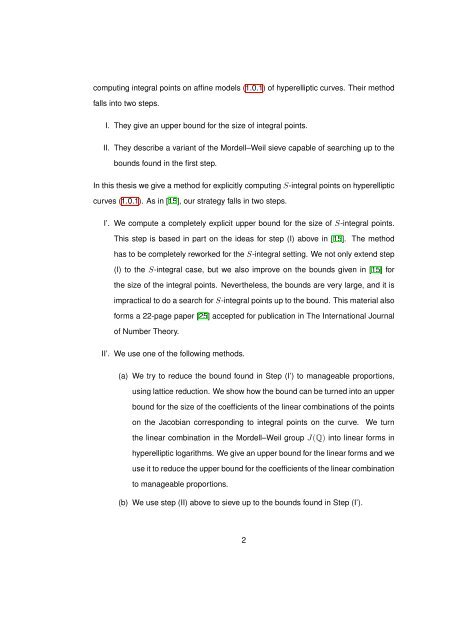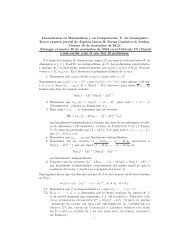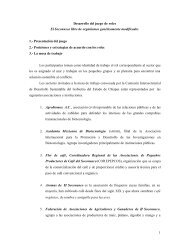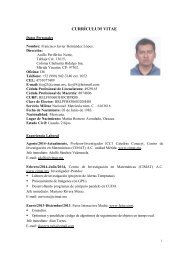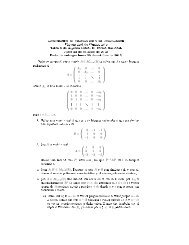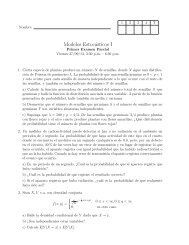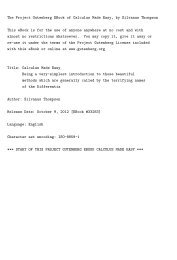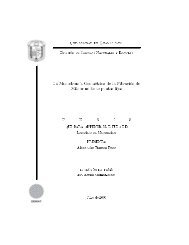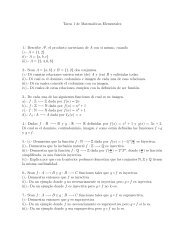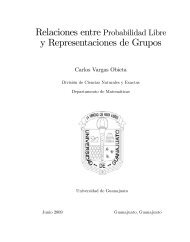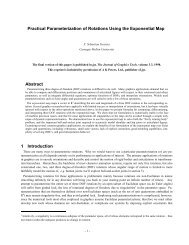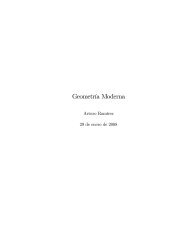S-integral points on hyperelliptic curves Homero Renato Gallegos ...
S-integral points on hyperelliptic curves Homero Renato Gallegos ...
S-integral points on hyperelliptic curves Homero Renato Gallegos ...
- No tags were found...
You also want an ePaper? Increase the reach of your titles
YUMPU automatically turns print PDFs into web optimized ePapers that Google loves.
computing <str<strong>on</strong>g>integral</str<strong>on</strong>g> <str<strong>on</strong>g>points</str<strong>on</strong>g> <strong>on</strong> affine models (1.0.1) of <strong>hyperelliptic</strong> <strong>curves</strong>. Their methodfalls into two steps.I. They give an upper bound for the size of <str<strong>on</strong>g>integral</str<strong>on</strong>g> <str<strong>on</strong>g>points</str<strong>on</strong>g>.II. They describe a variant of the Mordell–Weil sieve capable of searching up to thebounds found in the first step.In this thesis we give a method for explicitly computing S-<str<strong>on</strong>g>integral</str<strong>on</strong>g> <str<strong>on</strong>g>points</str<strong>on</strong>g> <strong>on</strong> <strong>hyperelliptic</strong><strong>curves</strong> (1.0.1). As in [15], our strategy falls in two steps.I’. We compute a completely explicit upper bound for the size of S-<str<strong>on</strong>g>integral</str<strong>on</strong>g> <str<strong>on</strong>g>points</str<strong>on</strong>g>.This step is based in part <strong>on</strong> the ideas for step (I) above in [15]. The methodhas to be completely reworked for the S-<str<strong>on</strong>g>integral</str<strong>on</strong>g> setting. We not <strong>on</strong>ly extend step(I) to the S-<str<strong>on</strong>g>integral</str<strong>on</strong>g> case, but we also improve <strong>on</strong> the bounds given in [15] forthe size of the <str<strong>on</strong>g>integral</str<strong>on</strong>g> <str<strong>on</strong>g>points</str<strong>on</strong>g>. Nevertheless, the bounds are very large, and it isimpractical to do a search for S-<str<strong>on</strong>g>integral</str<strong>on</strong>g> <str<strong>on</strong>g>points</str<strong>on</strong>g> up to the bound. This material alsoforms a 22-page paper [25] accepted for publicati<strong>on</strong> in The Internati<strong>on</strong>al Journalof Number Theory.II’. We use <strong>on</strong>e of the following methods.(a) We try to reduce the bound found in Step (I’) to manageable proporti<strong>on</strong>s,using lattice reducti<strong>on</strong>. We show how the bound can be turned into an upperbound for the size of the coefficients of the linear combinati<strong>on</strong>s of the <str<strong>on</strong>g>points</str<strong>on</strong>g><strong>on</strong> the Jacobian corresp<strong>on</strong>ding to <str<strong>on</strong>g>integral</str<strong>on</strong>g> <str<strong>on</strong>g>points</str<strong>on</strong>g> <strong>on</strong> the curve.We turnthe linear combinati<strong>on</strong> in the Mordell–Weil group J(Q) into linear forms in<strong>hyperelliptic</strong> logarithms. We give an upper bound for the linear forms and weuse it to reduce the upper bound for the coefficients of the linear combinati<strong>on</strong>to manageable proporti<strong>on</strong>s.(b) We use step (II) above to sieve up to the bounds found in Step (I’).2


